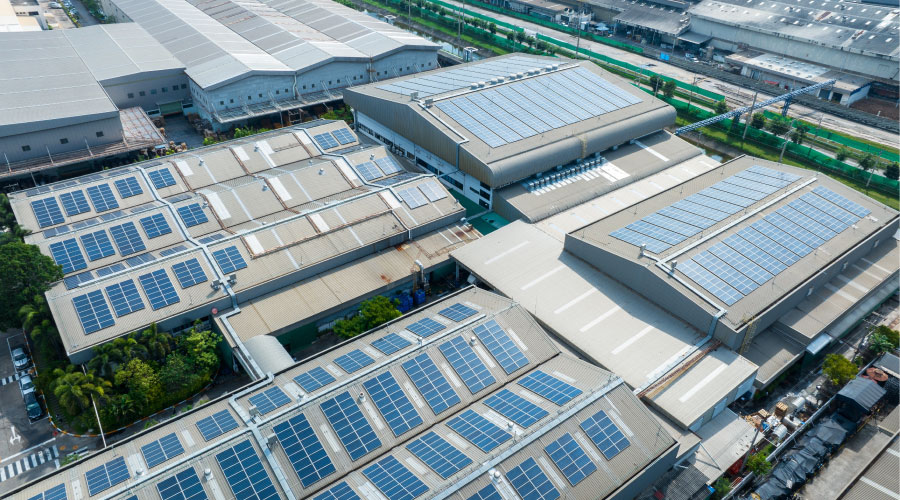Solar PV Rooftop Systems Can Help Defray Warehouse Electrical Costs
Solar PV rooftop systems are used to generate electricity at warehouses. Warehouses typically make ideal solar installation candidates since they often have large, unobstructed flat roofs that can accommodate large solar PV systems. Solar PV installations are entitled to a 30 percent tax credit. When using either the credit or the grant, the five year Modified Accelerated Cost Recovery System (MACRS) deprecation method is available; for 2012, there is 50 percent bonus tax depreciation. A building owner may be willing to make the investment for a rooftop warehouse solar installation if the warehouse tenant will agree to enter into a power purchase agreement to purchase its electricity from the building at a set price for a fixed period of time, usually 15 to 20 years. The building owner will use a combination of sources — the power purchase agreement annual revenue; the tax credit or grant; utility rebates, if available; green tag emission payments; and net metering electricity payments for selling the excess power back to the grid — to generate an acceptable economic return. With a power purchase agreement, a warehouse owner is essentially renting the roof as an alternate energy electrical generator.
Catching Up On Missed Deductions
In January 2011, IRS released Rev. Proc. 2011-14, which enables all property owners to catch up on any missing EPAct tax deductions and report them on their current tax return without having to file an amended tax return, a step that can be costly and inconvenient. The retroactive filing is accomplished by filing tax Form 3115 with the warehouse owner's current tax return. This change can be used proactively as a tax planning tool.
Warehouse owners who missed one or more prior tax deductions can combine the missed project(s) with a new project and secure a much larger combined tax deduction. For example, presume a warehouse owner installed energy efficient lighting in a 200,000 square foot warehouse for $100,000 in 2006 but missed the EPAct tax deduction. Now presume that, in 2012, this same owner has a new project involving natural gas heaters and some roof improvements for $260,000. Using Rev. Proc. 2011-14, this warehouse owner may be eligible to deduct the entire $360,000 in 2012 ($100,000 prior project plus $260,000 current project).
Warehouse owners have unprecedented opportunities to reduce energy costs, particularly with energy efficient lighting and natural gas heaters. Large EPAct tax incentives are available to support these projects but quick action is required as EPAct is due to expire Dec. 31, 2013.
Charles R. Goulding (charles.goulding@energytaxsavers.com) an attorney and CPA, is president and founder of Energy Tax Savers, Inc. Charles G. Goulding (charles.g.goulding@energytaxsavers.com) is an analyst with the firm.
Related Topics:













